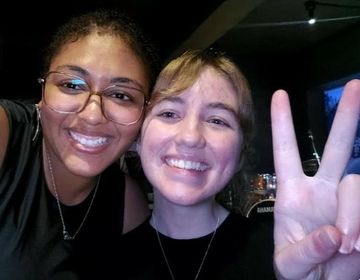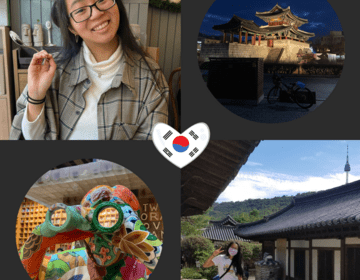What It’s Like to Teach English in a Private School in South Korea
Teaching abroad can be a very exciting and rewarding opportunity. However, in order to make it to the fun part, you must first make the incredibly important decision between Public schools and Private Schools....
In South Korea, public schools are simply normal schools including elementary, middle and high school. Korean private schools or hagwons are typically referred to as academies in English rather than an actual school. Hagwons (private academies/schools) act as an after school program. The topics for hagwons can range from art classes to the obvious English classes. In South Korea, the school day typicallt ends for students around lunchtime or 2pm, which means that most hagwons that teach primary and secondary schools will start at 2pm (at the earliest) and end quite late (sometimes as late as 10:30pm). This gives parents and students the room to choose and attend multiple hagwons without any time conflicts.
Most English teachers, I have met in Korea work a shift that starts at 2pm and ends between 8-10pm, which is standard. These hours typically have no lunch or dinner break incorporated into the schedule. You should however, be given a few sporadic 10 minute breaks in between lessons and if it is a good school then at least one 30 minute break to complete all of you lesson planning for the following day.
Now, if you are an early riser or perhaps just would prefer not to work late into the evening... then a hybrid hagwon is for you. Essentially, a hybrid hagwon simply caters to both kindergarten and the upper levels. Some schools may teach only kindergarten and elementary (like my hagwon) while others may open their doors to all levels even including adults.
If you decide to take this route, here are some things you can expect...
First, most likely your schedule will look like a typical 9-5 shift. At my hagwon, my hours look start at 9:40AM and finish at 6:40PM. My schedule typically looks like like this:
9:40AM I arrive at work and I have 20 minutes before my first lesson. This time is for lesson planning and lesson preparations. This window allows me to gather any materials such as, flashcards, worksheets, or game materials for my morning lessons. At 10AM my lessons start and go back to back until 12PM.
12PM is the designated lunch break for the kindergarten students and the teachers. We have one hour for lunch and I am lucky enough at my school to be able to go home for my lunch break after eating the provided food by my school. Typically schools will provide lunch for the teachers for free, although some may charge you and take a small fee out of your paycheck each month. Some schools may also allow you to leave the premise either to go home or go out to eat, while others may actually assign you to lunch duty. Lunch duty is basically where you have to sit and eat with the students. You will get them all ready for meal time by making them wash their hands and grab their silverware. Then you will serve them and spend the hour eating with them before cleaning up the dishes and making a compost container.
My school thankfully does not assign foreign teachers to lunch duty with kindergarten, that is handled by out homeroom Kindergarten teachers. However, at some hagwons, you may be hired on as a kindergarten homeroom teacher ad therefore those students are your responsibility even during lunch time.
Now, after lunch I am no where near finished with my kindergarten lessons. At 1PM I come back to my hagwon and I have a 30 minute planning break to get ready for the next day. At 1:30PM I teach my last kindergarten lesson of the day before having a 40 minute minute break (2:00-2:40PM.) This time is used for prepping for elementary classes or lesson planning for the rest of the week. This is also a time or the Head Teacher or my director to hold meetings, presentations, and information sessions full of feedback and advice.
At 2:40PM, all the teachers are meant to go to their respective classroom to supervise the children who have started to arrive at the hagwon. Classes begin at 2:50PM, with each lesson lasting 35 minutes. The students have 35 minutes with the Korean teacher and another 35 minutes with the foreign teacher before the leave. At my hagwon, we have these lessons back to back, with a short 10 minute break at 4PM and 5:20PM. I then have another planning break at 5:30-6:05PM before teaching my last class of the day which ends at 6:40PM.
During the lessons, the Korean teachers have a lot more to get done since (at least at my school) they focus primarily on the grammar, reading, and writing. Whereas the foreign teachers are expected to focus solely on speaking and communication with a little bit of writing and reading from the textbooks and projects. Since we are already here, let's get into a deep dive of what my week in the classroom looks like teaching wise. Thankfully, much of my week is already planned out for me through the textbooks, workbooks, and student books that are provided to the teachers and students.
So, first we start out on Monday strong, with a vocabulary test usually consisting of 15-20 words that they should've practiced with the Korean teachers the previous week. In class, they are given 5 minutes to study, 10 minutes to complete the quiz, and another 5 minutes to grade each others quizzes or relax while I grade their tests before jumping into their ELTS. ELTS are an online program we use that consists of videos, short paragraphs, listening activities, matching, fill in the blank activities, etc. In class, I show them the video presentation, story, and text. After asking some questions, I move onto their workbook where we complete two pages of their book.
On Tuesday, we focus on their student book which is broken down into different sections with two sections being assigned per week. In these sections we learn new vocabulary, a new grammar structure, and complete some workbook activities and projects. Wednesday and Thursday are basically a repeat of Tuesday (although some months we have special things. For example, this month every Thursday we gave the students a practice speaking test to prepare them for the Cambridge English Test.) Also, on Thursdays, we give the students a homework explanation for that nights workbook page so they can complete it by the next day. On Fridays, I check their homework and typically allow them to relax with some review games. However, if it is review week then Thursday and Friday are full of tests.
This schedule is obviously specific to my hagwon and as it currently stands. However, some other hagwons have a different system (that my school will soon follow suit with in the coming year). Now, some schools have Foreign teachers act as a homeroom teacher for their kindergarten lessons. In this case, you will be with the same class throughout the day. Sometimes this shift can include lunch and bus duty as well as some other duties personalized to your students like medication, accidents, packing bags, etc.
Now, don't let any of this information scare you or make you nervous. A lot of schools are different and you can ask your interviewer questions about the schedule if you are looking for something specific :)
P.S. The school year for hagwons begins in March and around this time, as well as November, potential students and their parents begin looking at schools. This means that the schools will hold parent presentations or entrance ceremonies leading up to the turnover of students that you may or may not have to attend and help present. Don't stress too much, most of the time the senior foreign teacher is usually asked to fulfill this position.
Related Posts
How to Go to the Doctor in South Korea as an English Teacher: A Guide to Healthcare and Health Insurance
As an English teacher in South Korea, maintaining good health is essential while living abroad. Navigating the healthcare system can seem daunting and stressful at first, especially if you can’t... keep reading
CIEE CHINGU – A Partner Program for Teachers in Korea
Chingu ( 친구 ) is the Korean word for friend . CIEE Chingu is a partner program included in CIEE’s Teach in South Korea programs! Our goal is to connect... keep reading
TWICE with CIEE: Kayleigh in Korea (PART 1)
Kayleigh is a CIEE alum who participated in CIEE's Teach in South Korea program AND CIEE’s Teach in Spain Volunteer program! CLICK HERE to read her experience in Spain. WHY... keep reading






